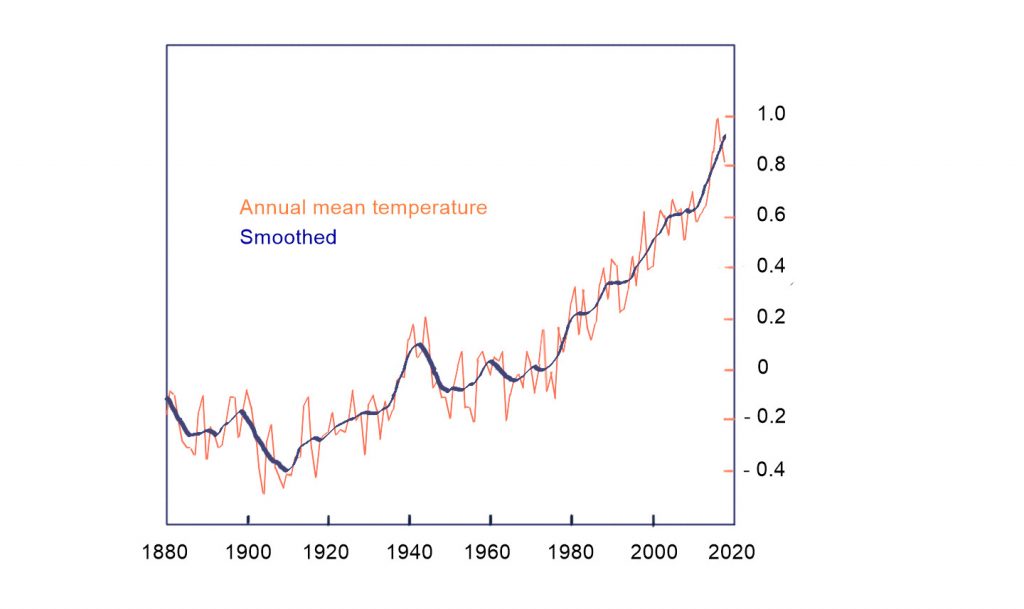Human contribution of carbon dioxide to the atmosphere is an active part of the climate system. That has been known for decades. In 1896 the Swedish chemist Arrhenius showed that CO2 from industrial and domestic burning of coal would lead to global heating. And during the last 70 years increasingly accurate climate models have shown how large this heating of the Earth system will be. Still, in the same time period the development of the global economy has lead to a dramatic rise in the yearly amounts of carbon dioxide humanity pumps into the atmosphere.

Temperatures are going up
Overall, the mean global temperature has been rising for more than 100 years. We know that from systematic and consecutive measurements of temperatures since the 1880-ies. It is natural for temperatures to fluctuate in a climate system. But the higher temperatures of today are not due to natural causes. The main reason for the rising surface temperatures in the Earth system have human – not natural – courses. That was the conclusion of the UN panel of climate experts, IPCC’s report of 2018. Humans are changing the climate rapidly.

How much warmer is it today than in the past? Nobody knows for sure. But we have a pretty good idea. Several techniques make it possible to estimate temperatures of the past. Clues to how warm it was have been identified in
- Ice cores from Greenland, Antarctica and glaciers.
- Geological data in the seabed and in the bottom of lakes.
- Finely grained material from geological structures.
- Tree rings.
Do these estimates agree? Not in detail, but overall, yes.

CO2-levels have grown exponentially
We know what the problems is. So, are we dealing with it? Well, the amounts of carbon dioxide in the atmosphere keep going up. And this happens, even though the oceans absorb approximately 1/3 of the climate gas which we emit into the atmosphere. The measurements of atmospheric carbon dioxide in this diagram were taken in Hawaii.
The curve is zigzagging – why is that? The answer is: seasonal variations. Plants, which mainly grow in The Northern Hemisphere absorb carbon dioxide during spring. But they release the gas again in the autumn. The Southern Hemisphere has fewer plants as it is largely covered by ocean.

There is much to gain if we restrain the rise in mean global temperature to 1.5 degree above preindustrial levels. That was concluded in the IPCC-report of 2018. But in order to do that we must hurry, the IPCC warned.
- All countries in the world must commit to a rapid change to renewable energy sources.
- By 2030 we can only emit half the carbon dioxide we do today.
- By 2050 we can no longer add carbon dioxide to the atmosphere.
Such a conversion is unprecedented in the history of mankind.
The IPCC is the United Nations’ intergovernmental panel on climate change.


